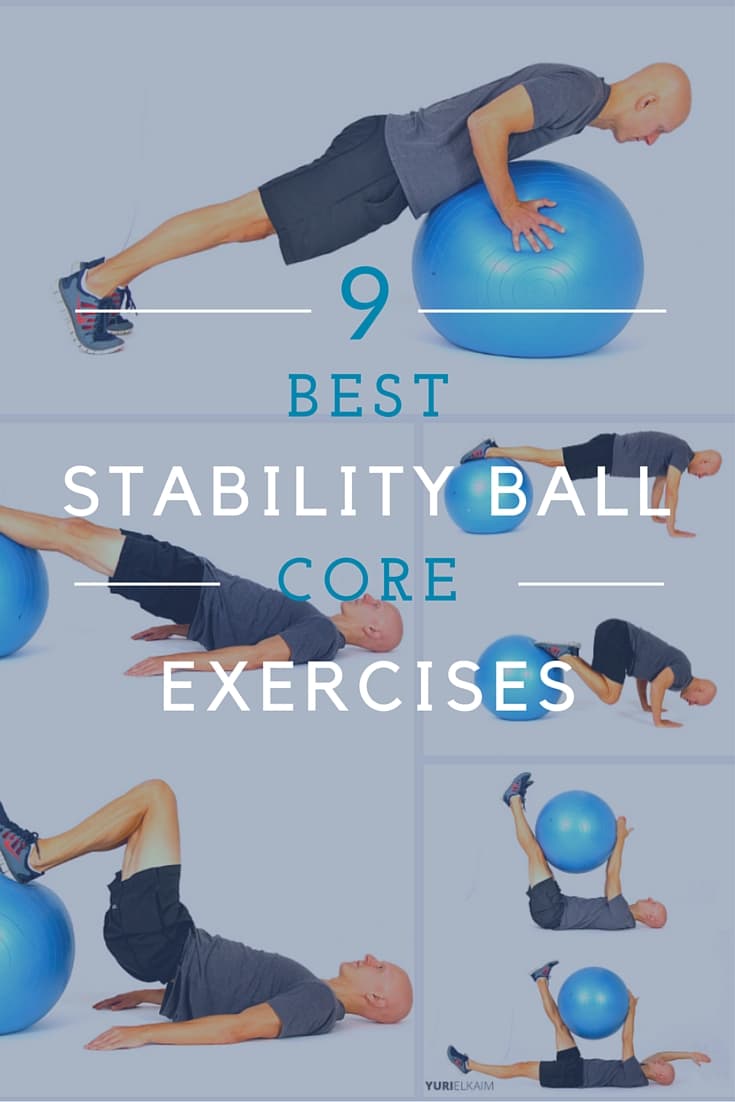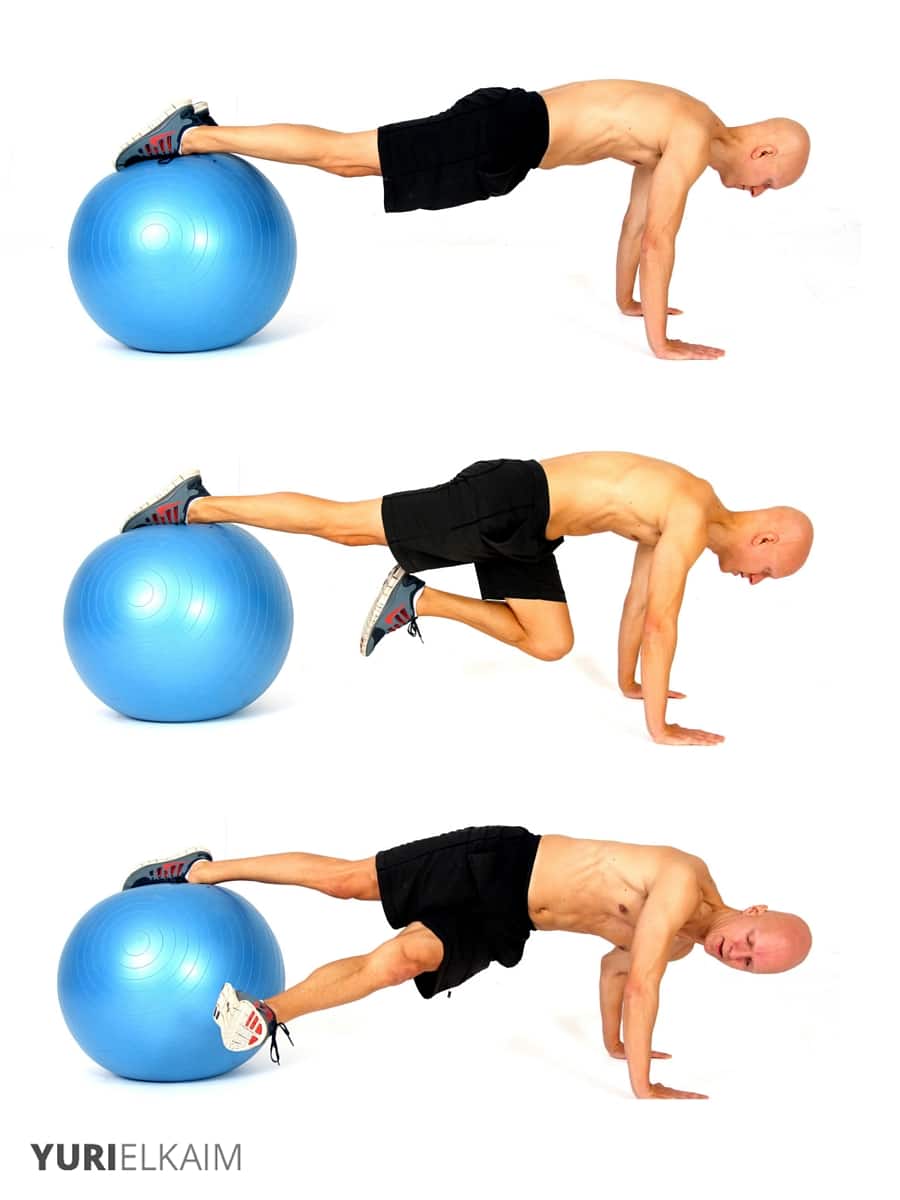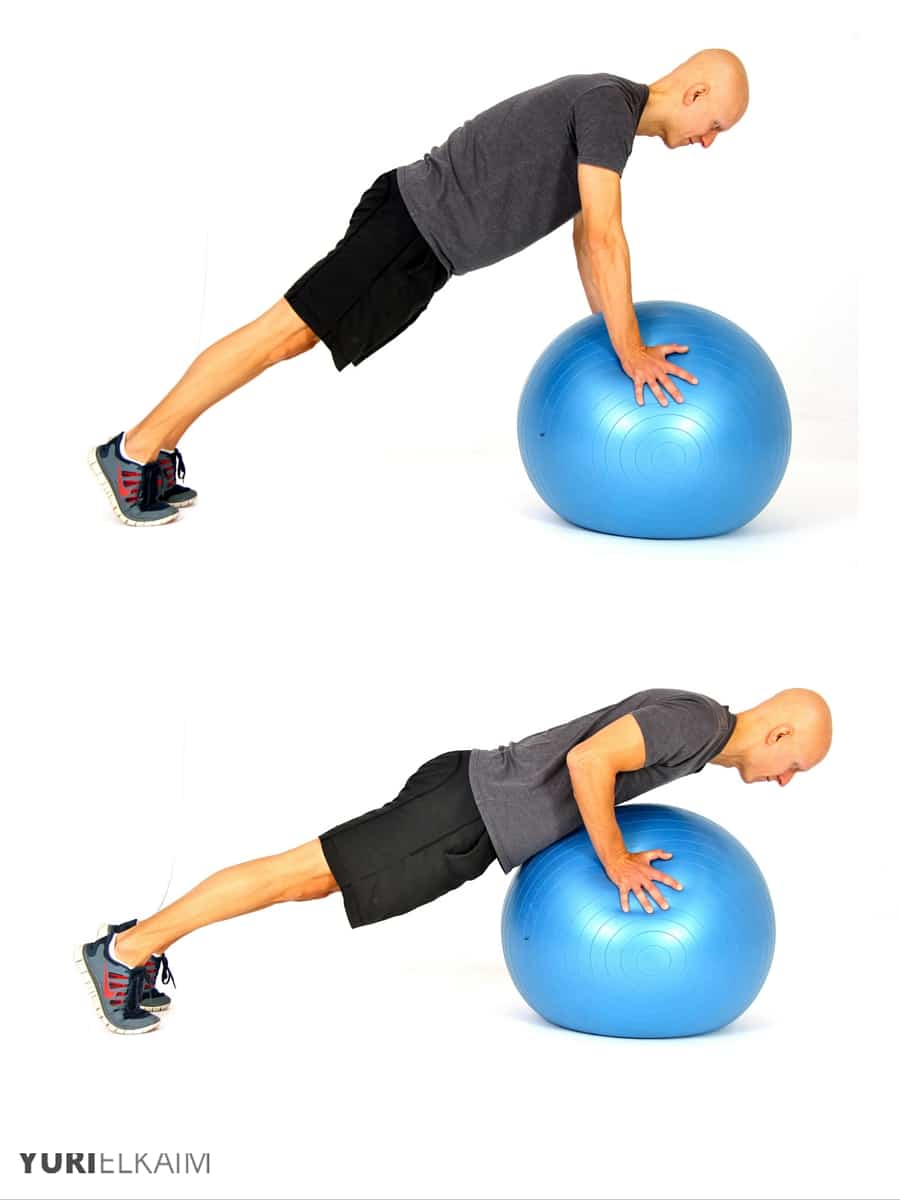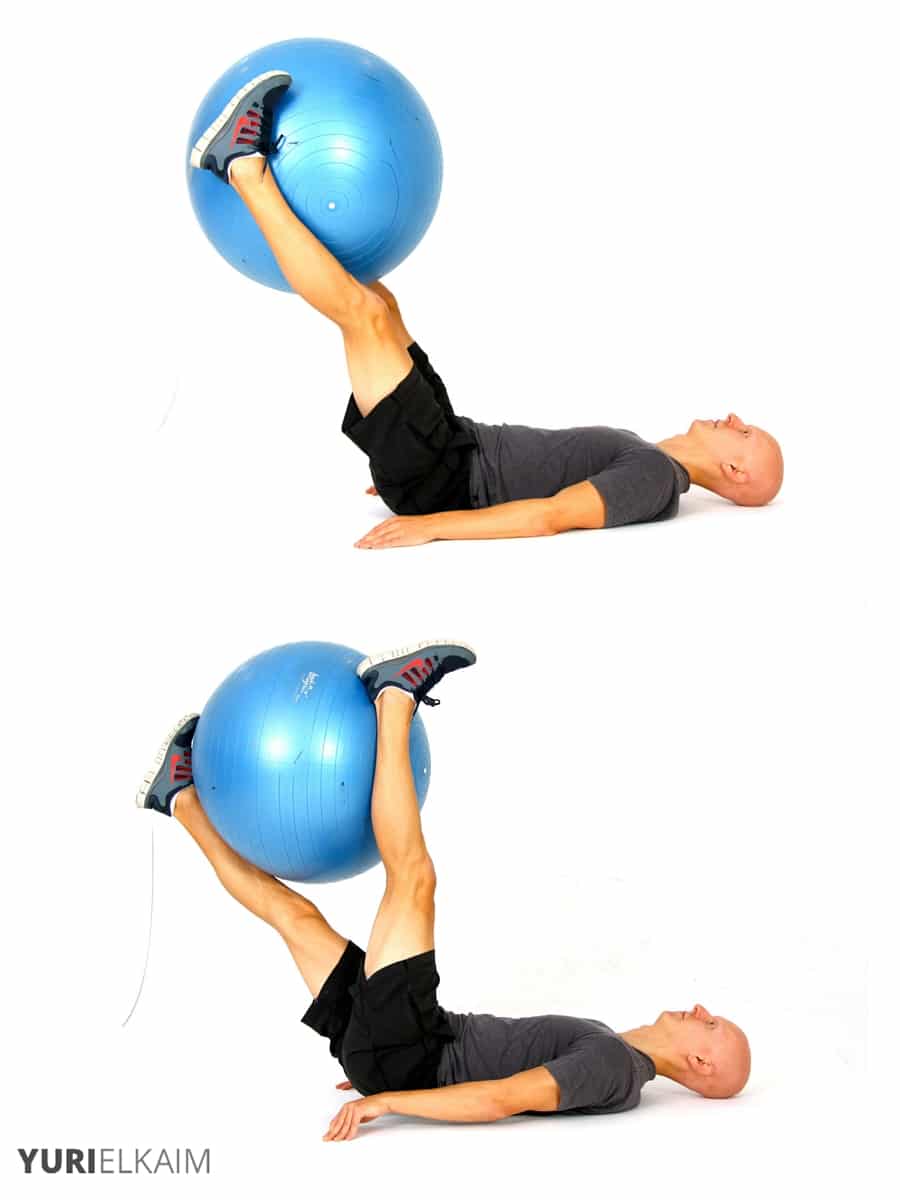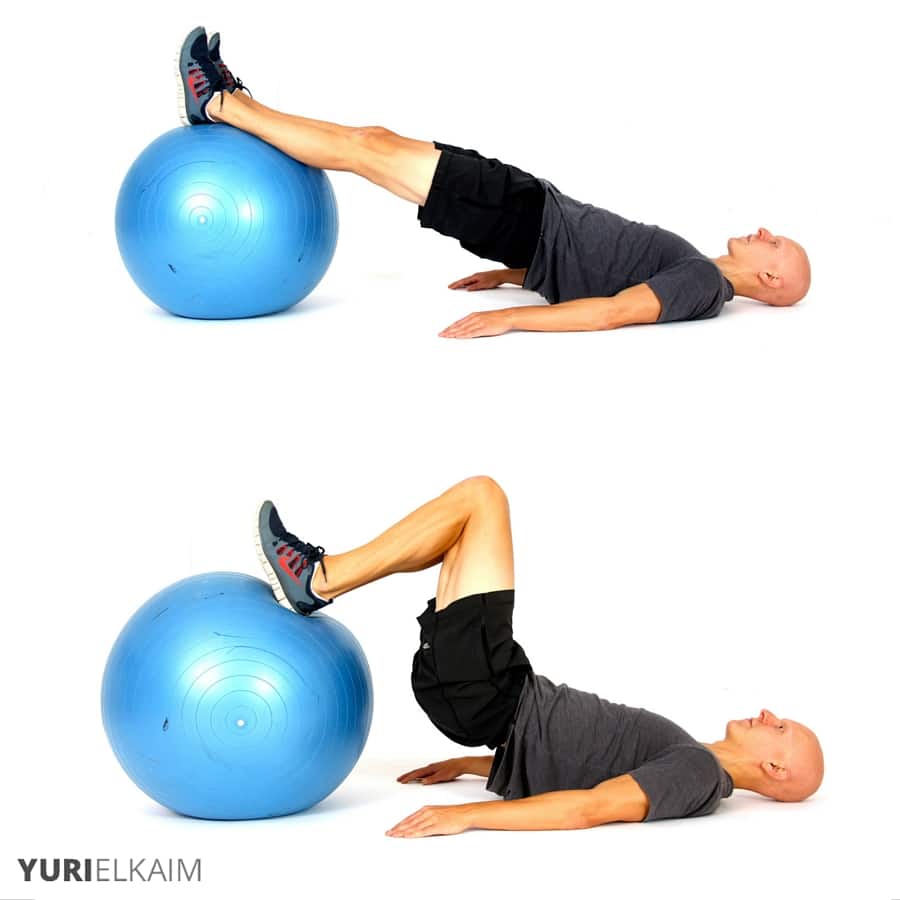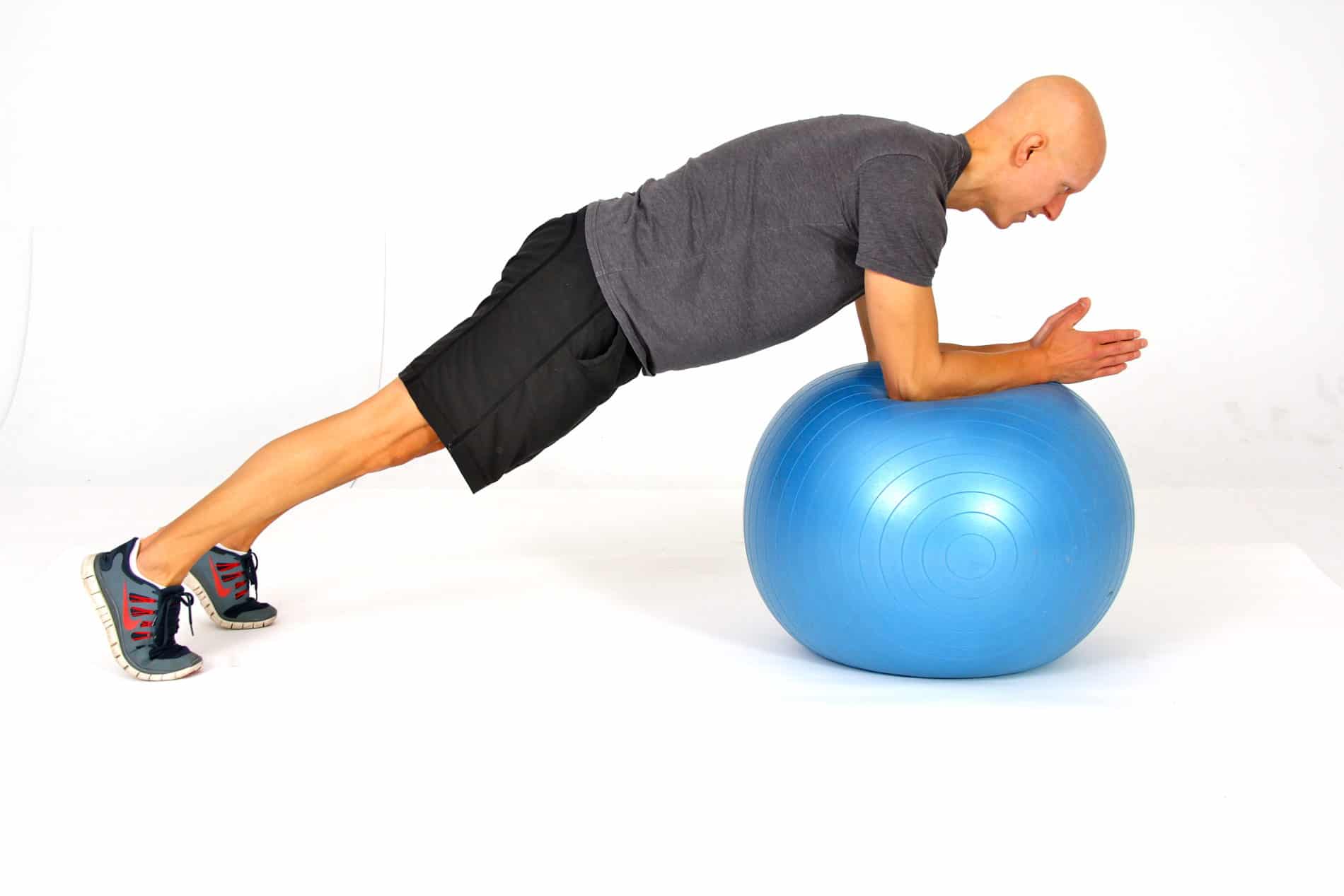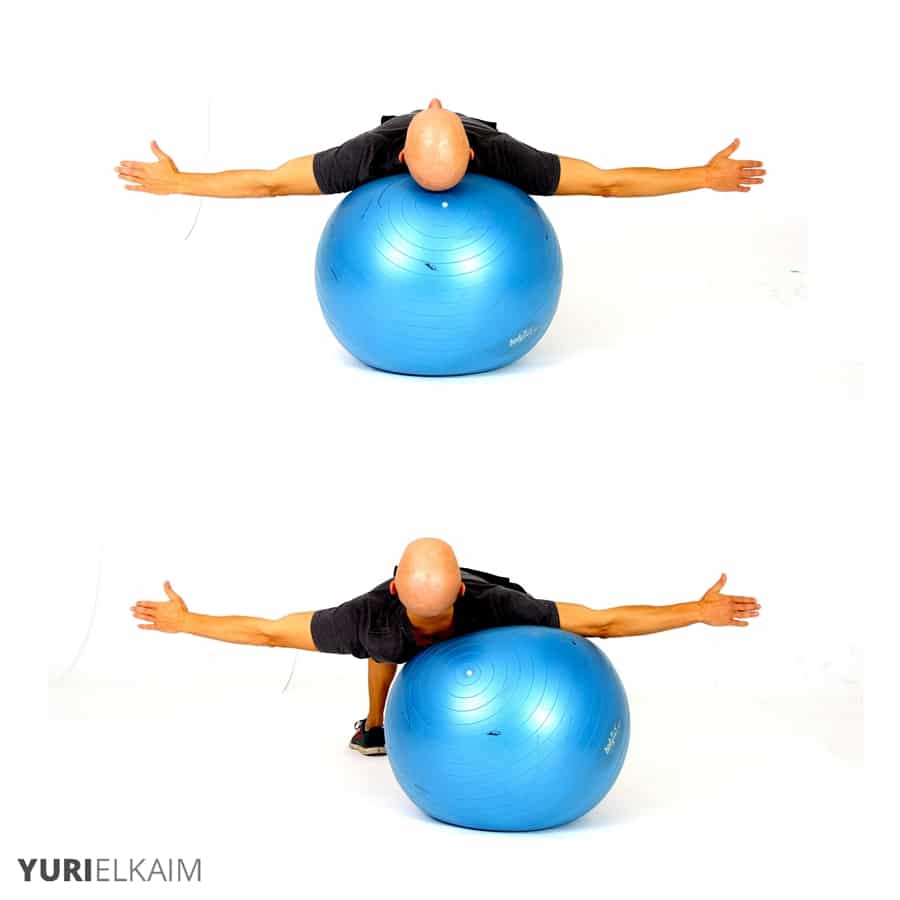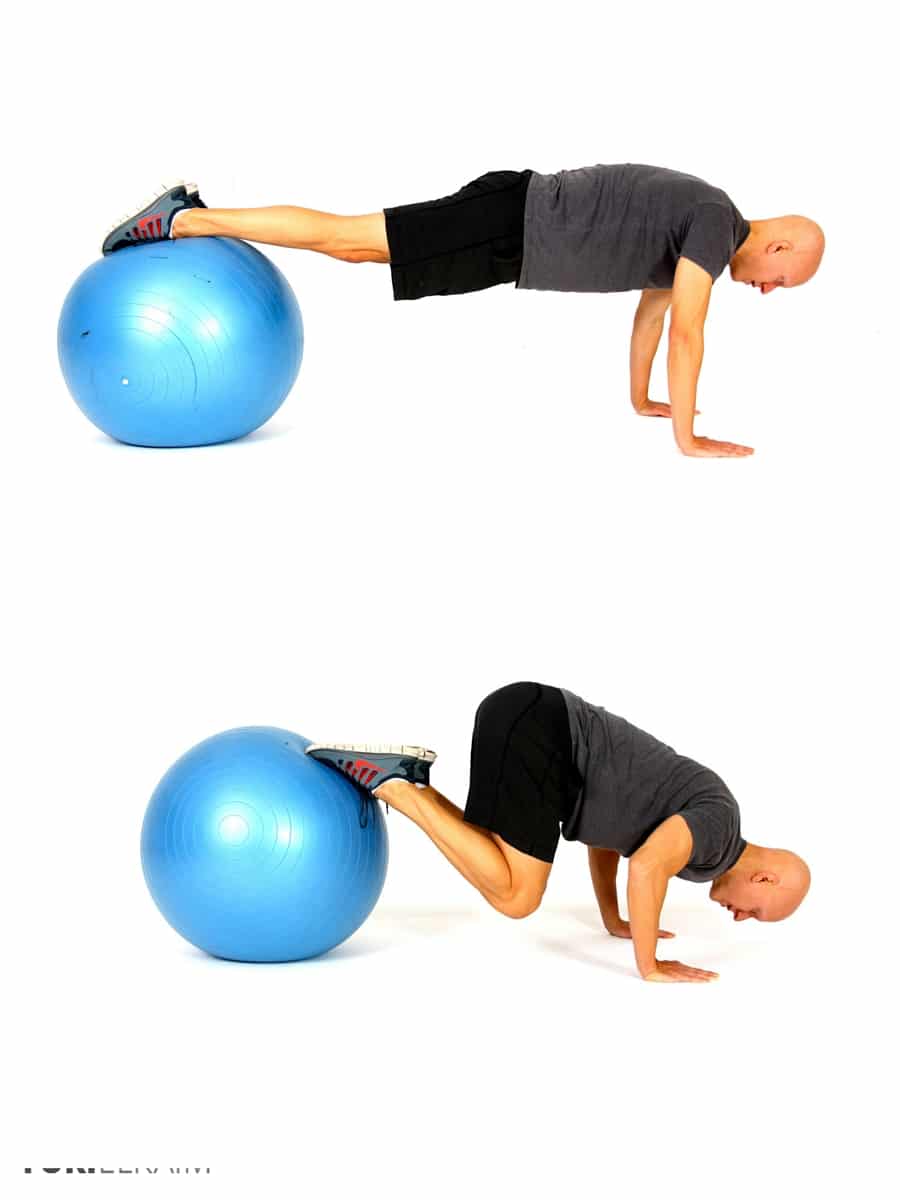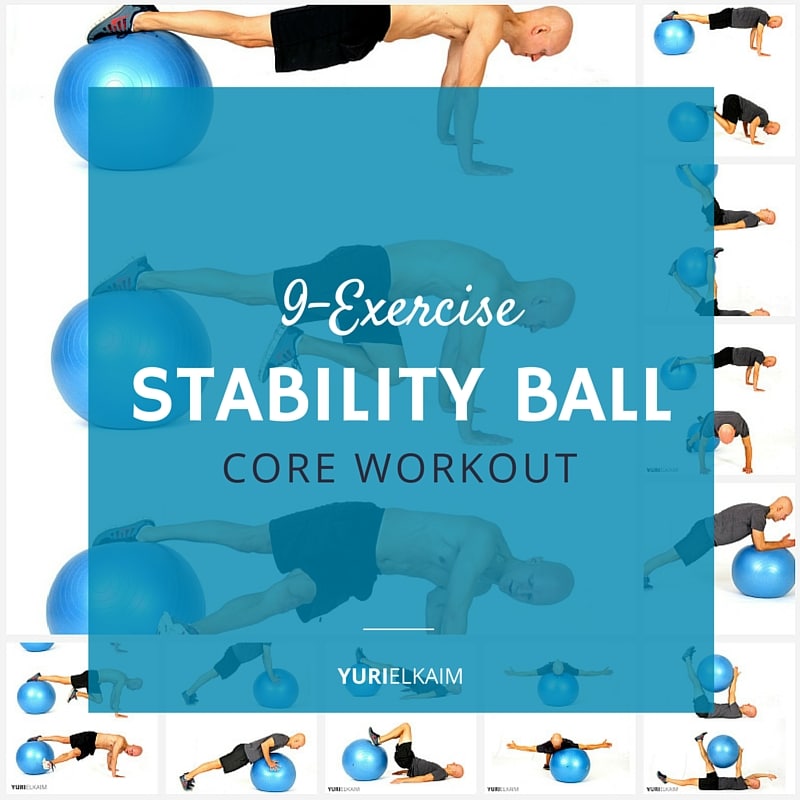If you’re on the hunt for the best stability ball exercises for core training then look no further. In this post, I’m going to give you the best of the best. No more of those basic “sit on the ball and do biceps curls” or old-school stability ball crunches.
In this article
This is the real deal and is only meant for those who enjoy challenging themselves and are serious about getting in great shape and using great stability ball exercises for core training breakthroughs. The 9 exercises you’re about to discover kill multiple birds with one stone, strengthen your entire body with single movements, and challenge your stability and core strength.
Ready to dive in? Let’s do it!
[Related: The 10 Worst Ab Exercises That Waste Your Time and Kill Your Spine]
The 9 Best Stability Ball Exercises for Core Training
Notes:
- For each of these core exercises, aim for 10 reps (or 5 on each side where applicable) in a controlled fashion.
- For added strength benefit (and where applicable) move your body very slowly on the eccentric (negative) phase of the exercise for a 5-6 second count. In most cases, this is where you lower yourself back to the floor or ball against gravity.
- This eccentric focus allows you to make a basic bodyweight core exercise much more demanding and require a greater activation of your type 2 muscle fibers – all good for building strength and burning fat with bodyweight exercises.
- Remember, your “core” is defined as any muscle crossing your shoulder or hip joints. Thus, a lot of muscle makes up your core and so that’s why you’ll see leg exercises as well as upper body push-up exercises in this list, too.
Ok, now we’re ready…
1. Stability Ball Grasshopper
This is a wicked full-body stability and core exercise.
How to do it:
- To get the most benefit from this exercise, ensure your body is in a straight line from head to toe, your hips are square (parallel to the floor), and your abs are tucked in and braced.
- Your hips should not sink at all during the movement, especially as you return to full length from the knees-in position.
- Another key point is to ensure that your shoulders are over the top of your hands at all times so that your body does not rock back and forth, in which the benefit of this stability ball exercise is mostly lost.
- If you have sensitive wrists, use a pair of dumbbells as your base for your hands and this will keep your wrists in a more neutral position and lessen their load.
2. Stability Ball Push-Ups
I love doing this push-up variation before any type of chest or pushing-type workout because the unstable ball really gets a lot of neglected muscle fibers firing.
You should know that this is a CHALLENGING exercise, so if you’re not comfortable doing it, then please don’t.
How to do it:
- Keep your hands to the side of the ball so that your wrists are more neutral and lower very slowly toward the ball to make this a good challenge.
- Just before your torso touches the ball, explosively (yet in a controlled fashion) push back to the top.
3. Stability Ball Straight Leg Deadbug
This is one of my favorite stability ball exercises for core development because it’s so deceiving.
By that I mean, it looks easier than it is.
How to do it:
- To get the most benefit from this exercise make sure your legs and arms are pressed into the ball at all times.
- Even when you extend one arm and leg to just above the floor, the leg and arm still holding the ball should be pushing into the ball.
- This guarantees that more of your muscles are activated and that you’re not just going through the motions.
4. Stability Ball Supine Leg Twists
Somewhat similar to the above exercise, this stability ball ab exercise uses only your legs while your torso and arms are braced against the floor.
How to do it:
- Place your arms out to the side or under the small of your back if more support is needed there.
- Start with your legs perpendicular to the floor and on either side of the ball.
- Then twist your legs so that your right leg is at the front of the ball (facing you), while your left leg is on the opposite side (facing away from you).
- Pause at the end of each twist, then twist again so the legs are reversed.
5. Stability Ball Hamstring Roll-Ins
This is an amazing exercise for the back of your legs. If you want to firm up those jiggly hamstrings, then do this exercise.
How to do it:
- The key is to keep your hips elevated the entire time so that your body is in one straight diagonal line from your feet to your head.
- Dig your heels into the ball as you drag the ball back toward your bum. Squeeze the hamstrings, then return SLOWLY to legs fully extended (remember to keep your hips up).
- To make this more challenging, give yourself a hug so that your arms are not supporting your body weight on the floor.
6. Stability Ball Prone Twists
This stability exercise is like a plank on steroids as it challenges all of your core muscles, including your obliques and groins.
How to do it:
- Start with your hands on the floor, shoulders over top of your hands, abs braced, body in a straight line, and feet on either side of the ball, which forces your groins to activate to prevent your legs from slipping off. This alone is a huge benefit.
- Next, slowly twist your hips to the right so your foot grazes the floor.
- Use your obliques to pull your hips back square and then over to the other side.
- Remember to keep your hips elevated at shoulder height the entire time.
7. Stability Ball Circle Planks
If you’ve done any amount of core training, then the basic plank is probably pretty easy for you.
This one will challenge you nicely, especially if you use a small ball so that you’re lower to the floor, which makes this type of ball exercise more demanding.
Most people get this exercise wrong by digging their elbows into the floor which is a CHEAT and negates a lot of the benefits of doing it properly.
How to do it:
- Here, I’d like you to dig your forearms and especially your wrists into the ball. This alone will increase your core activation 10-fold.
- Draw in and brace your abs, keep your hips up, and have your glutes and quads contracted.
- Then, simply move the ball around in a small circular motion moving only your arms. Your entire body should remain still like cemented concrete.
- As you move the ball through that circular motion you’ll feel different muscles in your core activate at different points of the movement. To make it more challenging, draw a bigger circle. But remember to keep your body as solid and still as possible.
8. Stability Ball Lateral Crab Walks
I discovered this exercise back in the day when I was working with some NHL athletes.
It’s a terrific stability ball exercise for strengthening your glutes and low back (which are very important components of a healthy core).
How to do it:
- The ball should be under your head and shoulders and feel like a pillow, while your arms are outstretched to the side and fully engaged/contracted.
- As with all of these stability ball exercises the key with this one is to ensure that your hips are up and your body is in a straight line from your knees to your shoulders.
- Enter your glutes, which in their contraction extend (or push) your hips up.
- As you move laterally a few inches to the left, you’ll instantly feel your right glute contract big time.
- You’ll also notice the left side of your lower back fire up as well, which reminds us of the intricate contralateral (cross) connection between our glutes and low back.
NOTE: You can feel the same activation pattern when standing on one leg. If standing on your right leg, your right glute will fire as will the left side of your back. And vice versa.
To make this exercise even more challenging, once you’ve reached your balance limit to either side of the ball, lift the opposite leg off the floor. Boom! Feel the difference that makes.
9. Stability Ball Knee Tuck Push-Ups
In my humble opinion, this is the most challenging push-up because it significantly challenges your core, upper chest, shoulders, and triceps more than any other push-up variations.
How to do it:
- I would recommend holding onto dumbbells on the floor to keep your wrists more neutral especially as you lower into the push-up.
- It’s a pretty easy movement, as you lower down, draw your knees in towards your wrists. This will naturally roll the ball in as well.
- But the real test begins when you push yourself out of this “tucked” position. Give it a shot and see for yourself.
Give this stability ball workout a go
Before we wrap, let’s bring all 9 of the stability ball exercises for core training together into a nice little workout routine.
Here, we’ll do a 9-exercise circuit with little to no rest between exercises, which will make this more of a metabolic and fat-burning workout, without the need for cardio.
Try it and you’ll see what I mean.
Perform 10 reps at each exercise (5 on each side where applicable). No rest between exercises, 1-minute rest between sets. Complete 2 sets.
Warm-up: 5 minutes of light cardio followed by a good dynamic warm-up.
1. Stability Ball Grasshopper
2. Stability Ball Straight Leg Deadbug
3. Stability Ball Push-Ups
4. Stability Ball Supine Leg Twists
5. Stability Ball Hamstring Roll-Ins
6. Stability Ball Prone Twists
7. Stability Ball Lateral Crab Walks
8. Stability Ball Circle Planks
9. Stability Ball Knee Tuck Push-Ups
There you go. Give this workout a shot and enjoy the core sculpting benefits.
What size stability ball should I get?
The size of a stability ball depends on the height of the person who will be using it. For individuals between 5’6″ and 6’2″, a 65-cm ball is recommended, while those taller than 6’2″ should use a 75-cm ball.
It is also important to consider the weight limit when choosing a stability ball. Most high-quality stability balls are designed to accommodate 250 to 300 pounds, including any weights that will be lifted. For instance, if you weigh 200 pounds and plan to use a set of 25-pound dumbbells, make sure your stability ball can support at least 250 pounds.
Enjoy this article?
Did you enjoy this article on the 9 Best Stability Ball Exercises? If so and you want to take your abs and core to the next level, then I’d invite you to download my FREE report called The Flat Stomach Secret. It’s packed with 7 unknown ways to lose belly fat and get amazing abs.

